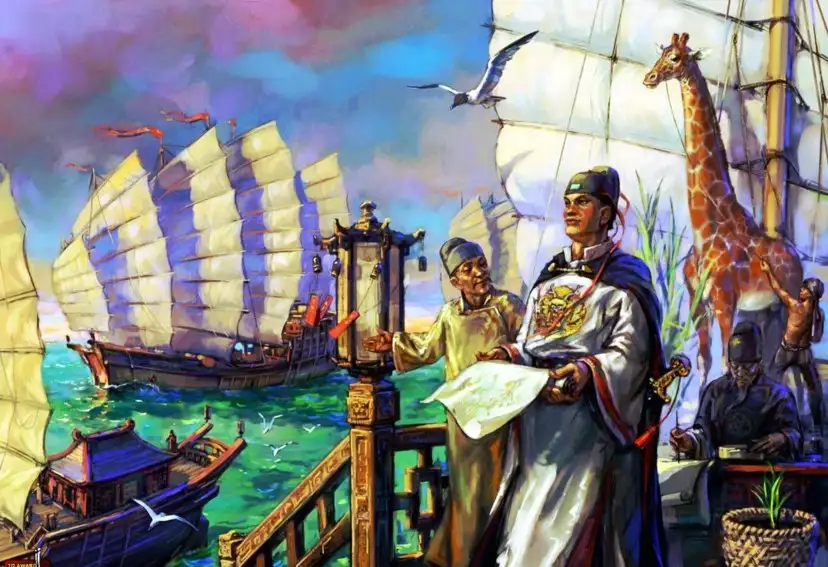 ne of the biggest curiosities in China’s history is the absence of an exploratory zeal on the part of this great kingdom. After all, it is not located in the middle of the Asian continent but on the outskirts of it, benefiting from a vast network of ports and bays where fishermen and traders operate. Because of its sheer size and prolonged history, it was always debated who represented the Chinese culture to the western world.
ne of the biggest curiosities in China’s history is the absence of an exploratory zeal on the part of this great kingdom. After all, it is not located in the middle of the Asian continent but on the outskirts of it, benefiting from a vast network of ports and bays where fishermen and traders operate. Because of its sheer size and prolonged history, it was always debated who represented the Chinese culture to the western world.
During the 12th century, the Mongols were very active, and they had in mind the invasion of Japan; this meant that most of the news heard from far East Asia was about either the Mongols or the Japanese, or some new Arabic traders. Therefore very little was heard about China. Many westerners thought that China might be another part of Korea.
Emperor Yongle from the Ming dynasty
During the Ming dynasty in the 14th century, China was very prosperous and a big player in the Eastern trading world. Emperor Yongle was thinking on a bigger scale upon reaching his peak that the commodities produced by China could be seen as very valuable by Westerners, which meant that they could profit highly. Profits that would be needed in the years to come to support all the war campaigns.
The emperor had paved the way for glory through a bloody civil war, and his longing for the legitimacy of power may have provoked a strong desire to expose his forces both inside and outside the state. But the emperor was also a very curious person. He wanted to know what kind of people, animals, or phenomena were beyond the seas to which the capital Nanjing was linked.
As much as we can praise Emperor Yongle, he isn’t the man that had put China on the map, even if these were his intentions. For such a task, there was the need for a man who lived most of his life on the sea as there was no telling what the western waters would await nor what sort of enemies they could encounter if they were to embark on such a dangerous but promising journey.
Admiral Zheng He
The man who was chosen for this journey, as well as the man that would put China on the map, was Admiral Zheng He. Zheng He came from the southern Yunnan province and was a Muslim, a descendant of a Mongolian dynasty minister. With the subjugation of his native province by the Ming dynasty, he became a prisoner at the emperor’s court.
Over time he acquired many important functions, this at the price of his manhood because only eunuchs in the court were accepted. But Zheng He never lost his warrior flair. He successfully fought on the side of Emperor Yongle until he gained his respect and trust. Historians say that Zheng He was a visionary who saw the potential of China as well as that there was no true future for the ruthless Mongols.
The fruitful expeditions
In 1403 Yongle names the eunuch a faithful admiral and entrusted him with the construction of a great fleet with which to go out into the world and show the power of the Ming dynasty. The core of the fleet was represented by the merchant ships, 80 meters long and loaded with all kinds of goods. The soldiers protecting them were traveling either in them or in smaller boats behind them.
But in 1405, the first large Chinese fleet was ready. It consisted of 62 vessels with a crew of 28,000 people. Zheng travels far and wide through Vietnam, Java, Sri Lanka, and South India, where he delivers luxury goods such as porcelain and silk in exchange for spices, exotic animals, and other curiosities. Two other journeys pushed him westward, and at that time, soldiers came in to help against pirates or local kings who refused to cooperate.
The fourth voyage, carried out between 1413 and 1415, was carried further by the Admiral. The imperial fleet reached the Persian Gulf, southern Arabia, and even East Africa. In addition to riches and other bizarre specimens of flora and fauna, the admiral takes on board diplomatic representatives from Arabia and Africa to bring him to the imperial court. But nowhere were commercial long-range pits or military bases established, so the Admiral had to rely exclusively on the overwhelming power of his fleet.
Indeed, as a result of these expeditions, a very lively exchange of diplomats and goods developed. In 1422 a new expedition was prepared that would take them halfway across the world. Only the expenses necessary for these colossal expeditions in the south and west contradict the fanciful hypothesis of some journeys and through the east that would have resulted in the “discovery” of America.
Moreover, in 1424 the brave admiral suffered a terrible shock as his imperial mentor dies, and the new celestial son is no longer willing to continue the expeditionary policy. Sea travel was no longer a major goal, with farmers returning to the spotlight to the detriment of sailors. The ships were brought to ports, the sailors sent home, and the admiral received a bureaucratic function in Nanjing.
Avid Writer with invaluable knowledge of Humanity!
Upcoming historian with over 30 million views online.
“You make your own life.”





